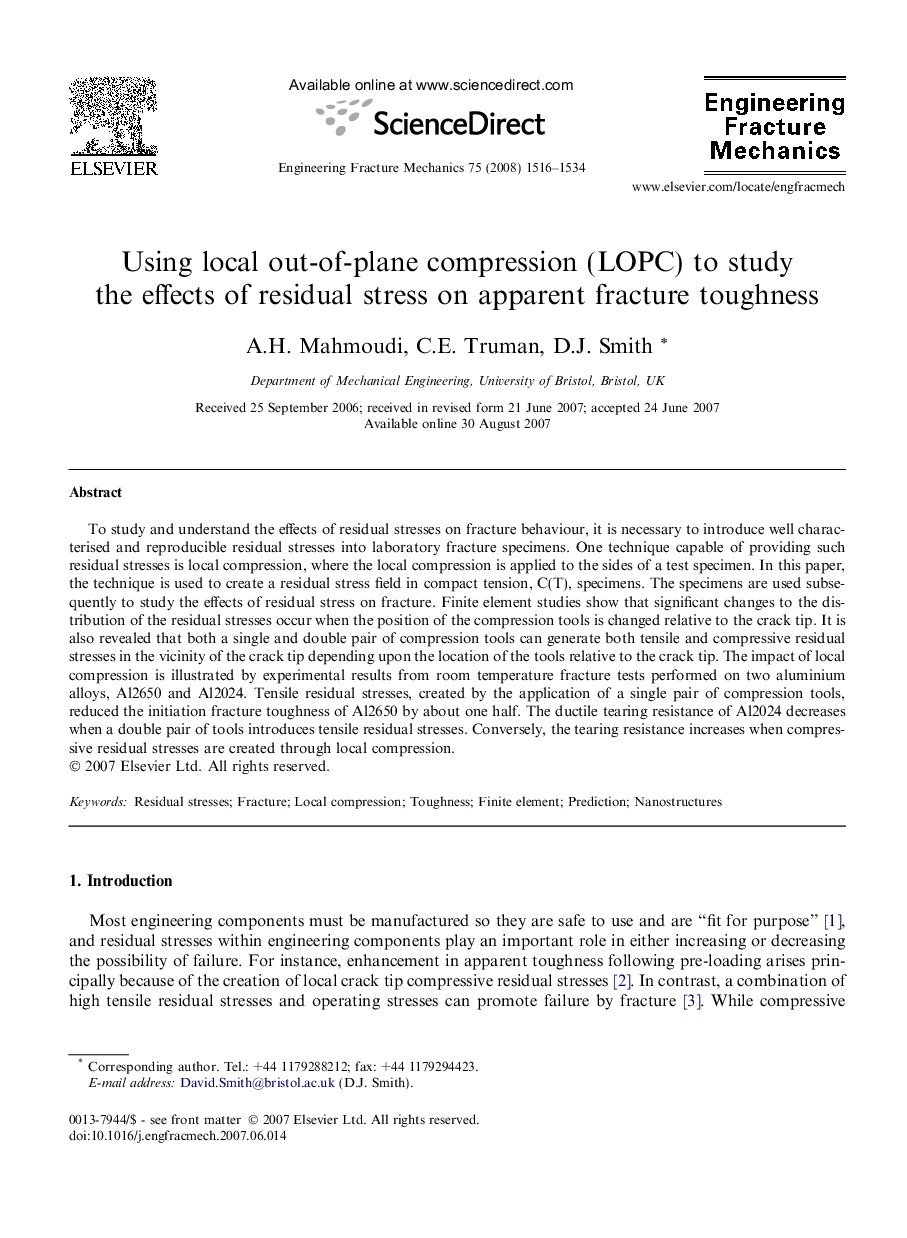| Article ID | Journal | Published Year | Pages | File Type |
|---|---|---|---|---|
| 771887 | Engineering Fracture Mechanics | 2008 | 19 Pages |
To study and understand the effects of residual stresses on fracture behaviour, it is necessary to introduce well characterised and reproducible residual stresses into laboratory fracture specimens. One technique capable of providing such residual stresses is local compression, where the local compression is applied to the sides of a test specimen. In this paper, the technique is used to create a residual stress field in compact tension, C(T), specimens. The specimens are used subsequently to study the effects of residual stress on fracture. Finite element studies show that significant changes to the distribution of the residual stresses occur when the position of the compression tools is changed relative to the crack tip. It is also revealed that both a single and double pair of compression tools can generate both tensile and compressive residual stresses in the vicinity of the crack tip depending upon the location of the tools relative to the crack tip. The impact of local compression is illustrated by experimental results from room temperature fracture tests performed on two aluminium alloys, Al2650 and Al2024. Tensile residual stresses, created by the application of a single pair of compression tools, reduced the initiation fracture toughness of Al2650 by about one half. The ductile tearing resistance of Al2024 decreases when a double pair of tools introduces tensile residual stresses. Conversely, the tearing resistance increases when compressive residual stresses are created through local compression.
